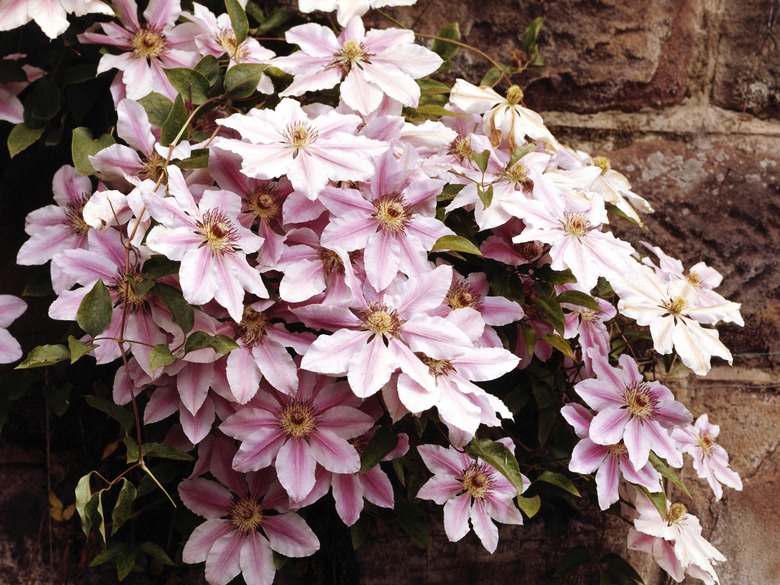How To Grow And Care For Nelly Moser Clematis
Things Needed
- Shovel
- Mulch
- Chicken wire
- Trellis
- Twist ties
- Pruning shears
Tip
Don't be too afraid to prune your clematis. Accidental overpruning may result in an area of the plant not blooming one season, but it will come back. If you have a long portion of vine that is dead, you may choose to leave it and train new growth to wrap around the dead portion to fill it out. To ensure the color of the bloom is what you want, wait to buy the plant when it is in bloom.
The Nelly Moser clematis is a cultivar that can reach as much as 10 feet in length, with offshoots from the main vine reaching out 3 to 4 feet. Best displayed on a trellis, arbor, or other climbing fixture, the blooms start in late May and can continue all summer long. The Nelly Moser variety of clematis offers a starburst-shaped bloom, up to 8 inches across, with white ruffled edges, and mauve or pink-colored pedals that grow in profusion.
Step 1
Plant clematis in the spring, in a sunny location. Do not place it next to a wooden structure — the plant could rot. In addition, choose a location at least a few inches from any solid structure, so air can circulate around the vine. Dig the hole twice as deep and twice as wide as the plant's container. Place the entire root-ball and the stake that came with the container about 2 inches lower than ground level, then backfill the hole. Add 2 to 3 inches of mulch.
Step 2
As the clematis starts to grow, it will need help climbing upward or outward. That can be accomplished by using chicken wire or a climbing fixture, like a trellis. Use twist ties to coax the vine in the direction you want it to grow. Water weekly unless there's soaking rain.
Step 3
Nelly Moser needs little pruning, just enough to get rid of those areas that are dead. The easiest way to tell what parts are dead is to wait until the vine starts blooming. The brown, brittle part is the dead portion that can be clipped. The first spring after planting clematis, cut the vine back, leaving about 2 feet. That will encourage more outward growth to help make the plant look denser. In future years, cut no more than the top one-third. If you are fearful or are uncertain about pruning, you can skip it. The purpose of pruning is to neaten up the plant and to encourage new growth. In time, even an unpruned clematis will fill out.
